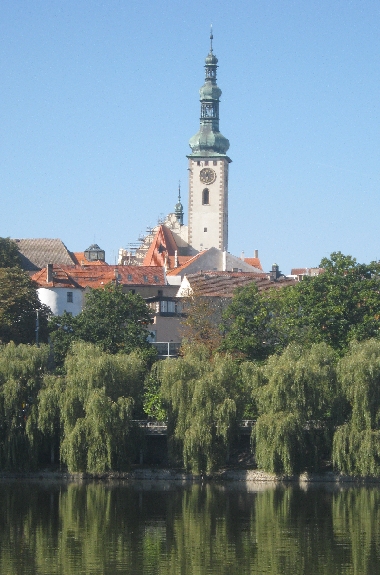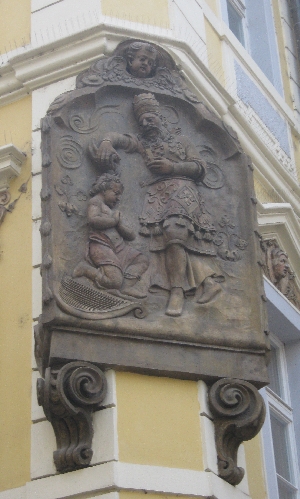
Last Monday evening, Sybille and I took the tram from Podbaba to Vozovna Strešovice and from there, walked through the back lanes to Hradcanské namestí, the large square lying immediately to the west of Prague Castle. As we did so, the only other people we saw were a young couple who were walking the same way as we were and whom we thought were probably Russian. Whilst we can tell when people aren’t speaking Czech, we have yet to be able to clearly distinguish between other Slavic languages!
In front of the west gates of the castle, there was a small group of Spaniards with a native Spanish speaker as their guide. But as we entered the first two quadrangles of the Prague Castle complex, we were surrounded by the amazing array of architecturally beautiful floodlit buildings, including the west front of St. Vitus Cathedral, with hardly a soul in sight. We basically had the whole place to ourselves. We were enjoying Prague – minus the tourists!
This is our fourth winter since moving to Prague in September 2008. Therefore we knew from previous experience that, following the Epiphany weekend in early January, through until late March, Prague has what can best be described as its non-tourist season. It is the period when you can walk around all the amazingly attractive sights of the historic centre of Prague, with very few foreign visitors surrounding you. But even then on Monday evening, we were still astonished as to how few people there were around.
For anyone reading this blog and wondering when is a good time to visit Prague, the answer I would give is between now and the third week in March. And if you want a really good financial deal, be adventurous and come without having pre-booked accommodation. At this time of year, there are regularly signs outside of hotels in the city centre saying, “Rooms available tonight” at remarkably reasonable prices.
Of course, you need to come prepared for the weather. Normally by now, there would be snow on the ground. But as I wrote in my earlier post, ‘Winter weather and walks’, we still have yet to experience really cold weather this current winter.
As someone who has chosen to live in Prague, I realise how very easy it is to complain about how, for much of the year, the city can feel almost overwhelmed by the number of tourist visitors. And yet they make a major contribution to the Czech economy and keep a considerable number of people in employment.
Likewise, they also make quite a contribution to the life of St. Clement’s Church. It very rare for us to have a Sunday service without visiting tourists in the congregation. Nearly all of them express grateful thanks for the opportunity we give them to worship in English, whilst they are visiting Prague. And some of them are quite generous towards us financially which we greatly appreciate. However, you would be amazed at the variety of currencies that appear in the collection!
The most recent example was Christmas Day morning 2011. For our Family Eucharist that day, we had a congregation of about 110 people. Of those, only about 25 were regular members of our worshipping community, as so many of them go back to their home countries over the Christmas season. All the rest were visitors spending Christmas in Prague.
I shall seek to make the most of the next two relatively tourist-free months in Prague. But I am very aware that much of what I enjoy living here only exists because Prague attracts so many visiting tourists.



































